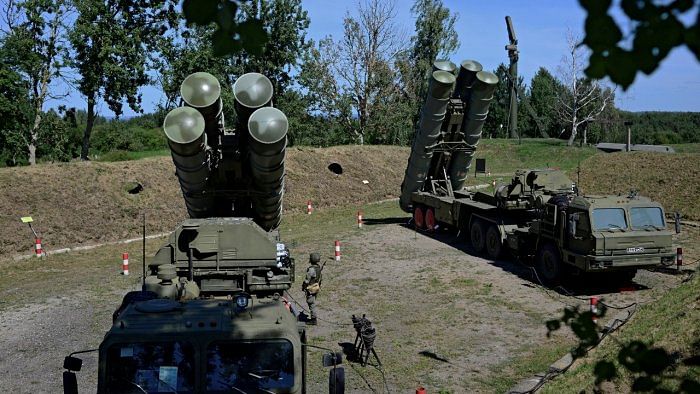
According to the Stockholm International Peace Research Institute (SIPRI), during 2017-21, India was in the 23rd place out of 25 largest exporters, near the bottom when exporting global arms. India has a 0.2% share, far behind the top five exporters — the US, Russia, France, China and Germany who together account for 77% of all arms exports. However, when importing defence equipment, India has the dubious distinction of being the largest, with both India and Saudi Arabia accounting for 11% of the global market. As regards defence spending, India is the third largest in the world behind the US and China. With so much familiarity with defence-related equipment and systems, why does India struggle to tap into foreign markets?
A major fillip recently to India’s export of defence platforms was the Rs 2,800-crore agreement with the Philippines to export BrahMos supersonic cruise missiles, further stirring interest among other Asean countries including Indonesia and Vietnam. Designed, developed and manufactured by BrahMos Aerospace, a joint venture of India’s DRDO and Russia’s Mashinostroyenia, the BrahMos missile is considered to be a game changer in defence capability. A combination of the Sukhoi Su-30MKI fighter aircraft and the BrahMos missile, for example, enables a user to hit very far and very hard.
Apart from the BrahMos missile, India’s Akash air defence platform is proving popular, with Saudi Arabia and the United Arab Emirates evincing keen interest in this weapon system. A coffee table book published by the Department of Defence Production mentions 84 different countries that welcome Indian weaponry such as Advanced Light Helicopters, Offshore Patrol Vessels, Coastal Surveillance Systems, Launchers and Electronic Systems. But will this interest turn into exports and will India’s exports be sustainable?
Several areas of concern remain. Defence equipment manufacture revolves around 16 Defence Public Sector Undertakings (DPSUs), while India’s private sector moved into defence manufacturing only recently. DPSUs are better positioned to leverage defence exports by taking advantage of the Defence and other Lines of Credit extended by the EXIM Bank. It’s easier for DPSUs to avail of Preferential Trade Agreements. DPSUs can take advantage of the services of defence attaches at Indian Embassies overseas who invariably play a very active role in promoting India’s exports, being knowledgeable, helpful, ideally placed and available on the spot to promote exports to the host nation’s defence requirements. Despite all these benefits, exports by the DPSUs are meagre. In FY 2020-21, while some of the shipyards did not export at all, the value of exports for other DPSUs, including the big-ticket Navratna and Miniratna companies, was a scanty Rs 1,300 crore, about 10% of India’s Rs 12,000 odd crores value of defence exports as spelt out in a Lok Sabha reply, leaving it to the private sector to corner a lion’s share. DPSUs must get their act together because despite dogged follow-up, the last-mile requirements to clinch orders get caught up in laborious permission-seeking and other bureaucratic compulsions from both the governments of India and the purchaser.
A way forward to together meet higher export targets and also cut imports is to earnestly pursue the defence ministry’s indigenisation lists mandating the manufacture of some 300 odd equipment and weapon systems such as lightweight tanks and mounted artillery gun systems that will be banned from future import in phases. These systems have been chosen after due consideration of the manufacturing capabilities of India’s private and public sector.
Trial and testing infrastructure in the country requires augmentation. All defence equipment manufactured in India must be subjected to trials and testing specially when metallurgy and indigenous chip production are major issues in defence production. Access is required to expensive infrastructure mostly available with DPSUs. BEML, for example, has a world-class test track at its KGF complex with fluid power, power line and structural engineering laboratories for fatigue testing and material chemistry which other manufacturers must use without hindrance.
On the strategic front, the ease of evacuation of defence equipment for export can be expedited through roads and railways to Vietnam through Myanmar, Cambodia and Laos. Efforts should be made for India to use Chittagong and Khulna ports for export to other Asean countries. Easy access to Indian defence products will only facilitate greater purchase.
Riding piggyback on the Brahmos, using ‘Free’ and ‘Preferential Trade Agreements’ to the fullest and capitalising on Defence Lines of Credit can only mean a paradigm shift in India’s defence exports is taking place. It is only a matter of time before India’s defence exports will become as acceptable to the world as Indian IT services and pharmaceutical merchandise is accepted today.
(The writer is former
Executive Director and
Member, Board of Directors, BEML)